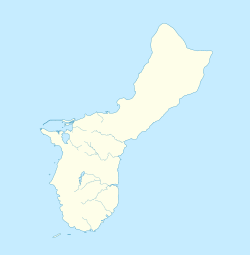Canada Water Wells | |
 | |
| Location | Near jct. of Canada-Toto Rd.& Canada -Toto Loop, Barrigada-Mangilao, Guam, or near junction of Canada–Toto Road and Canada–Toto Loop Road, Barrigada, Guam |
|---|---|
| Coordinates | 13°27′42″N144°47′4″E / 13.46167°N 144.78444°E |
| Area | less than one acre |
| Built | 1937 |
| Architectural style | Late 19th and 20th Century Revivals |
| NRHP reference No. | 08000165 [1] |
| Added to NRHP | September 26, 2008 |
The Canada Water Wells, near jct. of Canada-Toto Rd.& Canada -Toto Loop Barrigada-Mangilao, Guam, are water works that were built in 1937. [1]
They have also been known as Kanada, as Chochugu' and as To'tu. The structures were listed on the National Register of Historic Places in 2008; the listing included two contributing structures. [1]
A U.S. Geological Survey report in 2003 described the water of Guam, including identifying that there are approximately 180 water wells serving the needs of Guam, drawing on a lens-shaped aquifer. [2]


